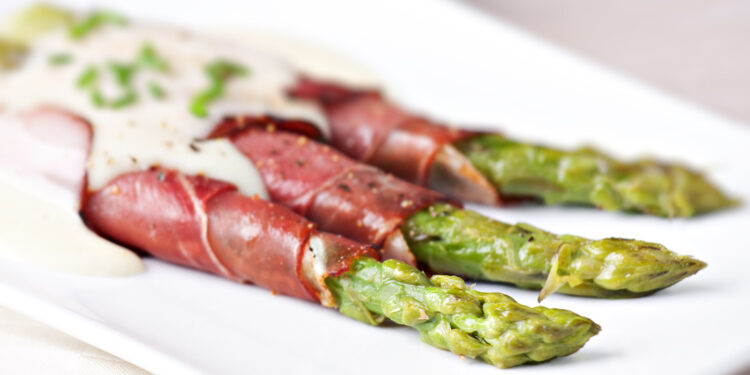To Sauce, or Not to Sauce? – Part 2: How to Rescue and Create Sauces at Altitude

This is a post by author David Burger. David is the general manager and executive chef for the Air Culinaire Worldwide headquartered kitchen in Ashburn, Virginia. Air Culinaire Worldwide is headquartered in Tampa and has kitchens in Aspen; Boston; Chicago; Dallas; Denver; Las Vegas; London; Long Beach; New York; Paris; San Francisco; Seattle; Van Nuys; West Palm Beach; and Washington, D.C. In addition, Air Culinaire Worldwide provides in-flight catering services at airports around the world via hundreds of catering partners. David is an expert in catering for business aviation and can be contacted at davidburger@airculinaire.com.
This business aviation blog post continues from our article last week, titled “To Sauce, or Not to Sauce? – Part 1: Choosing the Right Sauce for Your In-Flight Catering.”
When things go wrong with sauces at altitude, it’s not the end of the world. Effective solutions are available, and many creative means exist to fix a “broken” sauce that may have been re-heated incorrectly. Be aware that certain types of sauces are more difficult to prepare than others, and always have a Plan “B” sauce in place.
The following is an overview of what you need to know:
1. “Broken” sauces can be rescued
A whisk can save a sauce. If a sauce “breaks,” try using a whisk, or even a fork, to try to bring it back together. Depending on the sauce, you can try to add butter or cream to bring it back together while whisking. Adding spices or salt can also go a long way in adding taste and rescuing a sauce. Fresh lemon juice can do wonders in adding flavor to help a sauce. Always be sure to taste a sauce before serving it.
2. Know how to create sauces with on-hand ingredients
Sauces can be created at altitude with many standard on-board ingredients. If you have lemons and butter in the galley, you can melt the butter, squeeze in some lemon juice, and add half and half cream, along with salt and pepper, to create a quick sauce. Salsa can also be created onboard with just a few ingredients. In a pinch, salad dressing can also be creatively used as a sauce.
3. Sauces may be affected by altitude
Some sauces – particularly butter-based sauces – can be affected by altitude. Binding a Hollandaise sauce is an art in itself, and warming it at altitude can be tricky. It’s always best to ask for instructions on how to warm various types of sauces. Water boils at lower temperatures at altitude, and food tends to dry out faster. This is another reason to reheat sauces and dishes slowly and carefully.
4. Butter-based sauces can be challenging
While cream sauces can have issues at altitude, such issues are fewer, and more manageable, compared to those of butter-based sauces. In general, cream-based sauces do well if they’re well made, thickened properly, and not overheated. Many operators avoid butter-based sauces due to the sauces’ tendency to separate when cooled and/or reheated. In-flight caterers often suggest cream-based sauces as alternatives to Hollandaise and butter-based sauces.
5. Be aware of other sauce options
Many health-conscious passengers may prefer fruit salsa, or traditional salsas, in place of heavier sauces. For certain dishes – such as pork chops – a glaze (perhaps a balsamic glaze) can be used in place of a sauce. This is a healthier alternative to cream- and butter-based sauces.
6. Choosing the right sauce
If passengers do not have specific sauce choices, it’s usually best to let your in-flight chef suggest a sauce. Always let the chef know what heating methods you have onboard so that the sauce, and entrees, may be packaged correctly for re-heating. Always have a few ingredients on hand so that you’re able to create your own sauce, when necessary, or fix a pre-provided sauce. Best practice is to avoid butter-based sauces, when possible, and to serve sauces on the side. If a sauce is pre-served with the main course, it may affect appearance, texture, and/ or moisture of the entree.
Conclusion
Best practice is to always carry on-board ingredients necessary to fix a prepared sauce and, when necessary, to create a new sauce from scratch. Be particularly careful when dealing with butter- and cream-based sauces. Always taste sauces prior to serving, and best practice is to serve sauces on the side.
Questions?
If you have any questions about this article or need help in arranging your next catering order, contact me at davidburger@airculinaire.com.




